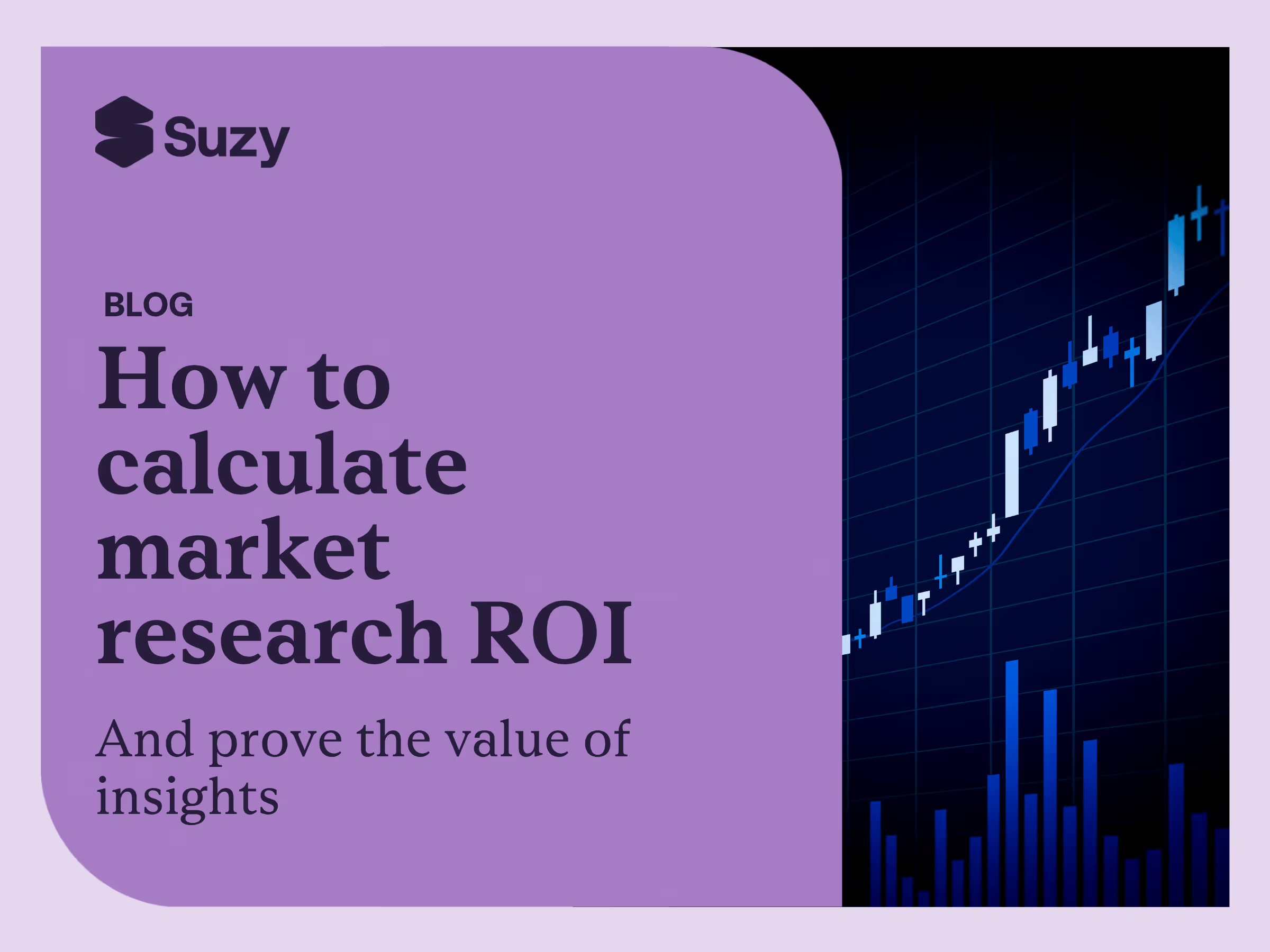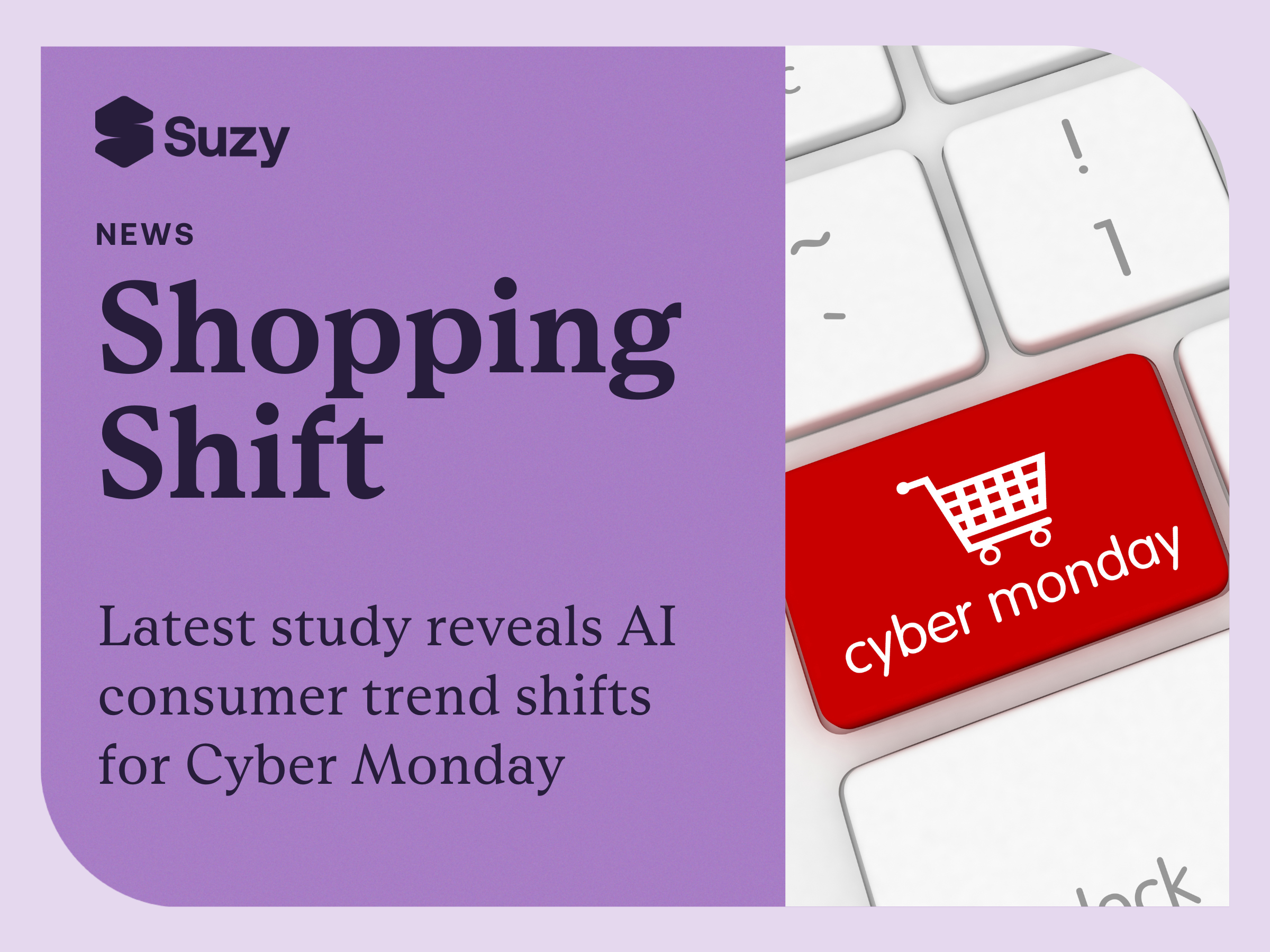Good research doesn’t just support decisions and business objectives. If done correctly, it can change the entire trajectory of a project, product, or business. But to get buy-in, especially when budgets are tight, you need more than a strong hunch. You need numbers.
That’s where market research ROI comes in – not as a vague promise, but as a clear, compelling business case for why research deserves investment.
Table of Contents
- Why Proving Research ROI Matters More Than Ever
- How to Calculate Market Research ROI
- Introducing the ROI Calculator: What to Expect
- Calculate Your Market Research ROI
Why Proving Research ROI Matters More Than Ever
Let’s be honest: teams are often asked to do more with less. To keep pace, research has to prove its worth, not just in outcomes, but in efficiency, speed, and scale.
Today’s consumers are navigating a landscape shaped by economic uncertainty, rapid advancements in AI, and an increasing shift toward digital engagement. As a result, behaviors are evolving faster than ever, and no category is immune. From food and beverage to CPG to travel and hospitality, brands across the board are feeling the impact.
Success in today’s market isn’t just about knowing what happened, it’s about knowing what’s happening right now and why it matters. As timelines compress and consumer behavior grows more fluid, the brands that win will be the ones that treat insights as a living input, not a retrospective tool.
When done right, research isn’t a cost center. It’s a growth engine.
Here are some examples of how brands can benefit from an iterative and end-to-end research platform:
- Faster Decisions: A global CPG brand accelerated time-to-insight by 85%, reducing go-to-market cycles. Enabling the brand to stay in the moment with consumers, and respond quickly in-market to build authentic and trusted connections.
- Increased Efficiency: One quick-serve restaurant brand was able to slash research spend by 50%, shifting from agency-heavy models to agile testing. And at the same time increasing productivity of the insights team.
- Risk Reduction: A PE firm validated a $49MM acquisition in 24 hours—backed by real-time consumer data. Ensuring that they grabbed a compelling investment opportunity before anyone else.
How to Calculate Market Research ROI
Understanding what delivers market research ROI helps teams justify spend, accelerate decision-making, and reduce risk. Whether you’re building a business case for leadership or navigating procurement, here’s the important information you need to know:
1. The business objective or goal
The business objective is the overarching outcome the company aims to achieve, such as increasing sales, improving conversion rates, growing market share, or expanding into a new segment. It differs from the research objective, which is the specific question or decision the research is intended to inform (e.g., “Which creative will drive the most purchase intent?”). While the research objective is tactical, the business objective ties directly to financial outcomes. Ultimately, every business objective ladders up to the same end goal: increasing revenue for a specific product, business line, channel, or the company as a whole.
Why it matters: ROI of research can only be evaluated in the context of the business objective it’s meant to support. Without this anchor, it’s impossible to define or measure impact.
2. The current revenue attributable to the product / business line / or channel
This is the baseline financial performance—the current revenue being generated without any changes or intervention. It reflects the status quo against which future performance will be compared.
Why it matters: ROI requires a before-and-after comparison. Knowing current revenue sets the benchmark for evaluating whether research-driven actions generate meaningful financial uplift.
3. The margin of the product / business line / or channel
Margin refers to the profit retained after costs—typically gross or contribution margin. It shows how much of each additional dollar earned actually contributes to the bottom line.
Why it matters: Revenue alone doesn’t reflect financial value. Margin helps translate revenue impact into profit impact, making ROI calculations more accurate and relevant to the business.
4. The incremental revenue expected or desired if research is undertaken
This is the anticipated financial gain resulting from a better-informed decision—such as choosing the right message, product design, or pricing strategy—based on research insights.
Why it matters: This number is the numerator in the ROI equation. It reflects the hypothesis that research will improve outcomes, and serves as the basis for estimating return relative to investment.
5. The incremental revenue expected or desired if no research is undertaken
This projects the likely financial outcome if the decision is made using gut instinct, past precedent, or limited data. It often reflects the "default" path.
Why it matters: Comparing outcomes with and without research quantifies the added value research could provide. This differential is key to isolating the research's specific contribution to revenue growth.
6. The cost of the research
This includes all expenses related to executing the research: sample costs, platform fees, analyst or agency time, and internal resource allocation.
Why it matters: This is the denominator in the ROI calculation. Even small research costs can be justified if the revenue upside is large. But without cost data, it’s impossible to assess the efficiency or scalability of research investment.
Introducing the ROI Calculator: What to Expect
The market research ROI calculator is designed to help quantify the business impact of consumer research by comparing expected financial outcomes with and without research investment. By inputting key metrics—such as current revenue, margin, research costs, and projected uplift—the calculator delivers clear, actionable outputs that can support internal alignment, budget approvals, and strategic prioritization.
When using our research ROI calculator, you’ll receive three key outputs that help quantify the value of your research investment:
Incremental Revenue Lift from Research
This output shows the estimated additional revenue generated when research is conducted compared to when it’s not. For instance, if research-informed decisions are expected to generate $100K in incremental revenue, but only $20K without research, the calculator will highlight the $80K lift attributable to research. This gives teams a tangible way to demonstrate the financial upside of investing in consumer insights.
Breakeven Point for Research Investment
Using your product or channel’s margin along with the research cost, the calculator determines the minimum incremental revenue needed to break even. For example, if research costs $30K and your profit margin is 30%, you would need at least $100K in incremental revenue to cover the cost. If your projected revenue exceeds that threshold, the investment is considered financially justifiable.
Return on Investment (ROI) of Research
The tool calculates an ROI percentage to quantify the efficiency of the investment. This makes it easy to compare research to other activities or budget items. For example, if research leads to $100K in incremental revenue (vs. $20K without research) and costs $30K to conduct, the ROI would be 50%.
Calculate Your Market Research ROI
To calculate your ROI on research, simply complete each of the data fields in the calculator below.
.webp)







